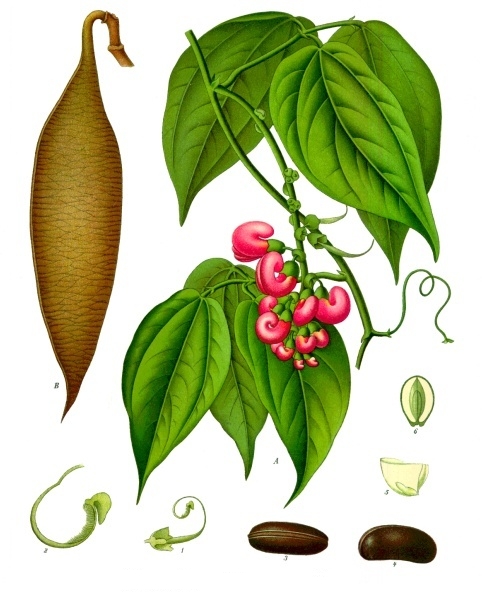
Murder is as old as mankind. Or so the saying goes. Every culture has a history of poisons, from the ironically named “elixirs of life†eagerly sought after by early Chinese emperors and nobles, to the Poison Damsels (Visha Kanya) of ancient Indian mythology that could kill you with just a drop of the deadly substance that seeped from their pores.Yet as quickly as the art of poisoning has progressed over time, the development of scientific detection has been quick to match pace. In fact, if it weren't for scorned lovers, revengeful siblings and malicious foes we might not have established the study of poisons, or what modern scientists call the field of toxicology. Today, scientists are equipped with technology that can detect over 200 drugs and poisons in a human blood sample at incredibly low concentrations. However, poison remains a choice method for murderers and political assassinators. Our technology may have vastly improved, yet the race between scientific detection and the clever and deceitful practices of poisoners continues on.

16th century physician Paracelsus is often credited with the title “father of toxicologyâ€, but this gives little recognition to those who first explored the uses and dangers of poisons. Early hunter-gatherers were toxicologists in their own right, taking note of which plants animals avoided in order to draw their own conclusions on what was safe to ingest. While poison detection might have started out in the spirit of saving each other from a deadly last meal, it wasn't long before early poisoners began using lethal plants for more nefarious means. Dipped darts and arrows were fashioned to protect, to hunt, and ultimately to get rid of each other. Meanwhile, more covert individuals might have slipped a dash of poison into a friend or foe's last meal. And with the advent of written language, records of substances that could kill became an important source for not only those who intended to protect but also those who intended to do harm.

Poisons, for many, equalled the playing field. Both those with or without societal influence could use poison as a means to assert or obtain power. Capital punishment via poisoning was openly used in some societies. A death sentence by hemlock poisoning, for instance, was given to philosopher Socrates for corrupting the Athenian youth. Early Nigerians attributed mystic abilities to the poisonous calabar bean as being able to distinguish between, and kill, only the guilty. The modern Russian government has a long history of removing political opponents, often using high profile poisonings to deter others from following in their footsteps.
Meanwhile, those without power came to rely heavily on the primitive detection methods and high mortality rates that predated the establishment of modern medicine. In male dominated, 17th century Italy, professional poisoner Giulia Tofana helped hundreds of women escape unhappy or abusive marriages by providing them with a simple cure for their husband problem: a tonic containing lead, arsenic and belladonna. In her 50 years of work, she enabled the poisoning of more than 600 men before eventually being caught and executed due a customer’s guilty conscience.

18th-century Spanish physician Mathieu Joseph Bonaventure Orfila was eventually able to give toxicologists a leg up in this deadly game of cat and mouse. Before Orfila provided advancements to the field of toxicology, capturing poisoners usually depended on witnesses, confessions, or conspicuous possession of poison. Orfila documented the specific effects that particular chemicals would have on different organ systems, helping those who conducted autopsies pinpoint not only if a poison was used, but which one.
In order to continue to elude progressing toxicologists, poisoners needed to use chemicals that were not as easily detected and generated deaths that looked like natural causes. Arsenic became popular among 19th-century poisoners, many of whom were women, since symptoms mimicked common diseases of the time and often took hours to finish off the job, giving poisoners ample time to slip away. Eventually, physicians discovered that burning a victim’s stomach contents released a distinct garlic smell if arsenic was present. Poisoners once again had to begin the search for the next deadly substance that would be harder to detect and easier to get away with.
The rapid growth and development of new, and often synthetic, compounds is one of the largest obstacles facing modern toxicologists. Much like in the drug industry, toxicologists can only test for what they know. New substances are difficult to recognize and as the arsenal of employed poisonous substances increases, the costs for detection and research continue to climb. All the while, poisoners continue to evolve their methods. In recent years, lethal doses of the essential blood sugar regulating hormone, insulin, have been able to be disguised as naturally occurring deaths. Even those who we have come to entrust with our lives cannot always be looked at without suspicion: medical professionals and emergency responders have been known to take advantage of their knowledge and access to medications to commit the perfect crime. Though contemporary poisonings rarely involve the scavenging of rare herbs or blending of tonics, the goal of poisoners has remained the same throughout time: deceive, eliminate and avoid detection. We may not know what future poisonings and scientific detection methods will look like, but it is undoubtedly true that the two are interconnected and it is safe to assume that this deadly battle of wits is far from finished.



